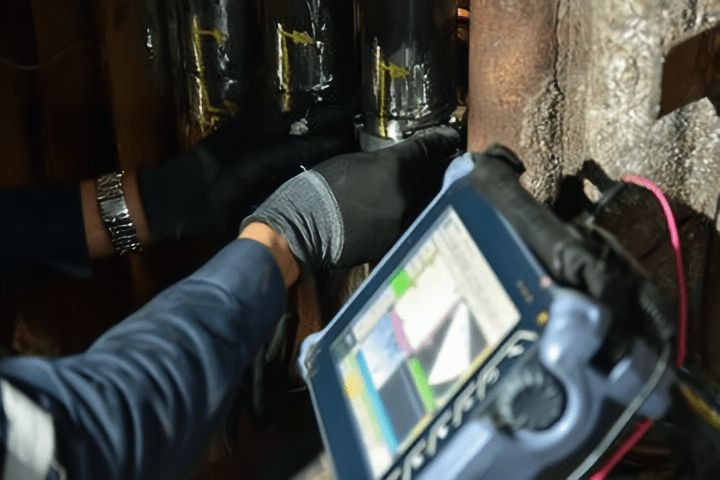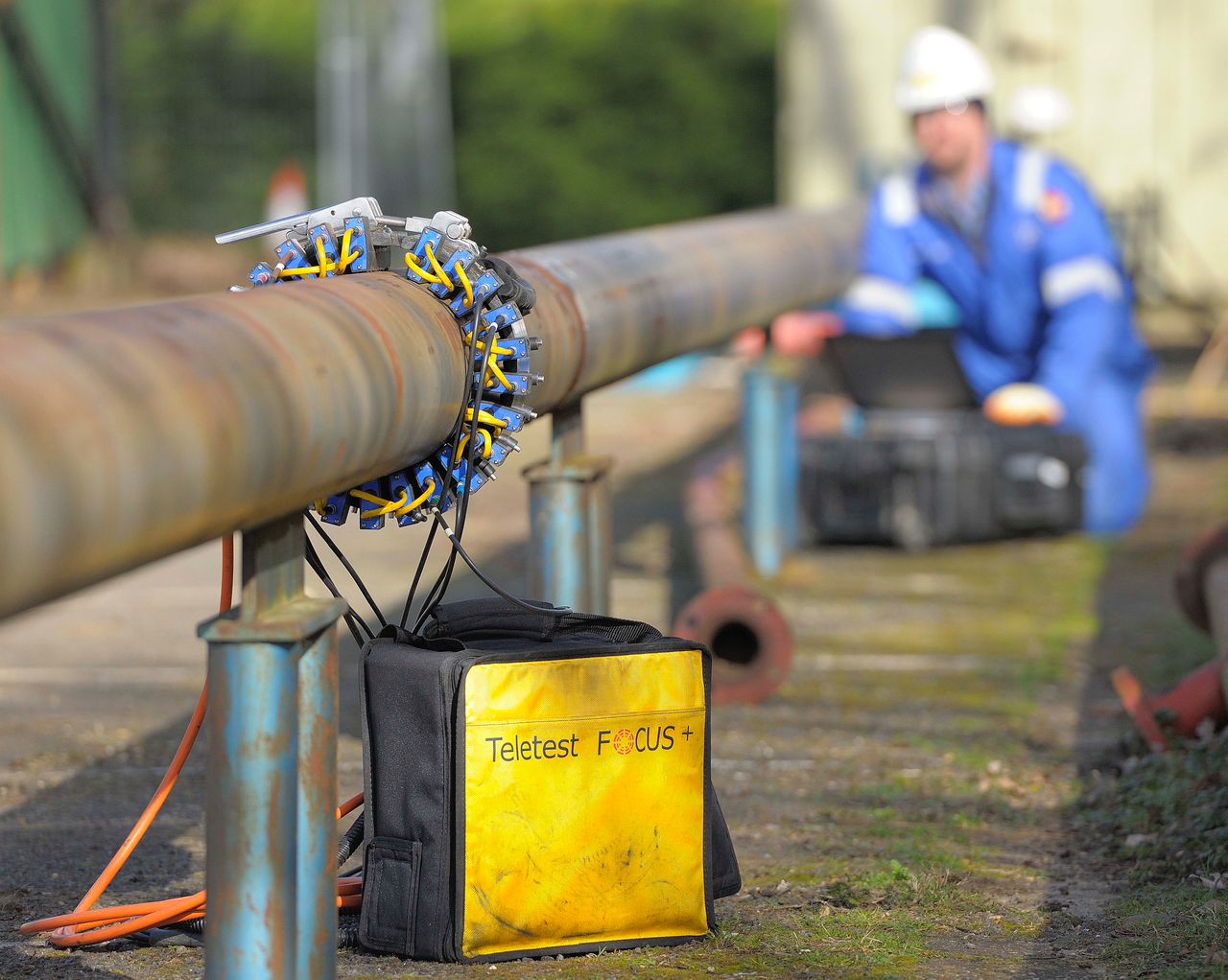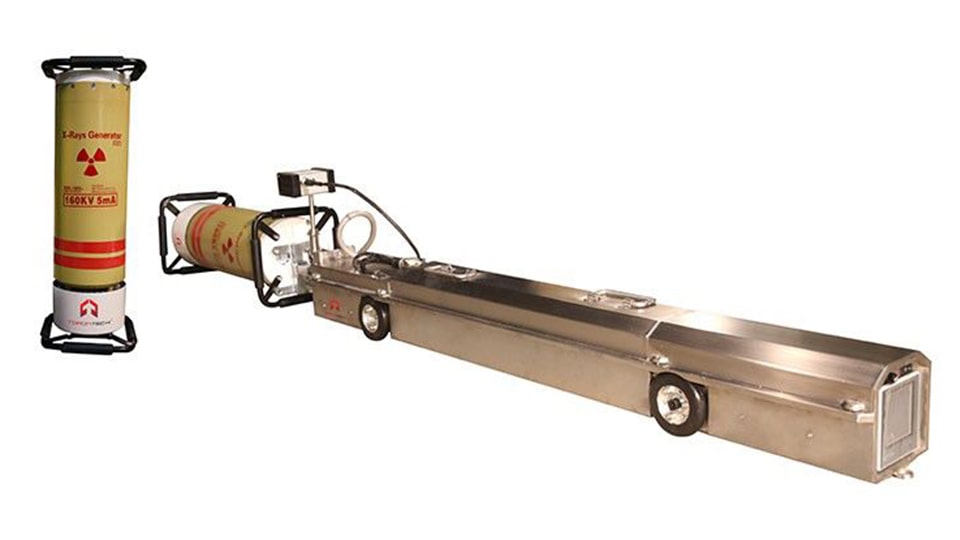Phased Array UT Testing
Phased Array UT Testing (PAUT) is an ultrasonic non-destructive testing (NDT) method. Ultrasonic phased arrays use multiple ultrasonic elements and electronic time delays to generate and receive ultrasound, creating beams by constructive and destructive interference. As such, phased arrays offer significant technical advantages over conventional single-probe ultrasonic testing: the phased array beams can be steered, scanned, swept and focused electronically.
Electronic scanning permits very rapid coverage of the components, typically an order of magnitude faster than a single-probe mechanical system.
Beam forming permits the selected beam angles to be optimized ultrasonically by orienting them perpendicular to the discontinuities of interest — for example, lack of fusion in welds.
ICS provides NDT technicians, certified to ASNT Level 2 or 3 and to ISO 9712, with extensive experience in phased array UT testing technique.
Time of Flight Diffraction (TOFD) Testing
Time of flight diffraction is an advanced non-destructive testing method used for weld inspection.
Time of flight diffraction (TOFD) is one of the most reliable non-destructive testing methods in testing welds for both pre-service and in-service inspection. An accurate assessment of welds is vital to ensure that the stability and integrity of welded structures is not compromised by defects.
This ultrasonic method is used in a diverse range of industries including petrochemical, chemical, oil and gas, power generation and fabrication..
ICS provides NDT technicians, certified to ASNT Level 2 or 3 and to ISO 9712, with extensive experience in TOFD UT testing technique.
Long Range UT Testing
Long Range UT Testing (LRUT) is an advanced technology for detecting and analyzing corrosion where access is difficult.
The earliest work showed that the smallest area of metal loss which LRUT can detect is approximately 3% of the pipe wall cross-section. The reporting level which is normally used is a signal amplitude equivalent to 9% area, to ensure that false call rates are kept to an acceptable level.
Long-range ultrasonic testing using guided waves is one of the few test methods which is able to examine 100% volume of pipe wall from one tool location so has found widespread applications in non-piggable pipeline where efficient inspection coverage is required or the pipeline in question has hard to reach areas.
ICS provides NDT technicians, certified to ASNT Level 2 or 3 and to ISO 9712, with extensive experience in Long Range UT testing technique.
Magnetic Flux leakage (MFL) Tank Bottom Testing
Magnetic Flux leakage (MFL) Tank Bottom Testing is an advanced technology. MFL is a simple to use, rapid and robust corrosion detection technique.
MFL comprises of a magnetic yoke and a set of magnetic sensors arranged as a vector, in order to cover an area in one pass. These components are situated at the bottom of the scanner. Both the yoke and sensor vector travel in tandem across the surface of a steel plate along the X-axis. The orientation of the magnetic yoke and vector of sensors are 90° to the direction of travel.
ICS provides NDT technicians, certified to ASNT Level 2 or 3 and to ISO 9712, with extensive experience in MFL Tank Bottom testing technique.
Internal Rotary Inspection System (IRIS)
The internal rotary inspection system (IRIS) is an ultrasonic non-destructive testing (NDT) technique used to inspect pipes and tubes.
The ultrasonic system used by IRISNDT both collects and stores ultrasonic signals as the assembly is withdrawn. The ultrasonic data is displayed in real time but is also available for post test analysis and reporting. The software generally displays the data in colour coded topside and end views for evaluation of any indications of thickness changes.
IRIS is widely used to examine heat exchangers, boilers, and fin fan cooler tubes. It can be applied for ferromagnetic and non-ferromagnetic materials. This technique is very good for detecting and sizing corrosion, erosion, and baffle wear.
ICS provides NDT technicians, certified to ASNT Level 2 or 3 and to ISO 9712, with extensive experience in IRIS testing technique.
Pipeline X-Ray Crawler Testing
X-Ray Crawler is similar to conventional radiography however an x-ray source tube on a crawler device is run inside the pipe to each weld. Film is wrapped around the welds and the source tube is excited. The technique is quick and can inspect on average 100 welds per day. The advantages of X-ray crawlers are their speed and the short exposure time. The film is also crisper and much less grainy when compared to conventional radiography using Iridium type sources.
ICS provides NDT technicians, certified to ASNT Level 2 or 3 and to ISO 9712, with extensive experience in pipeline crawler RT testing technique.


 Testing.jpg)

 Tank Bottom Testing.jpg)
.jpg)
